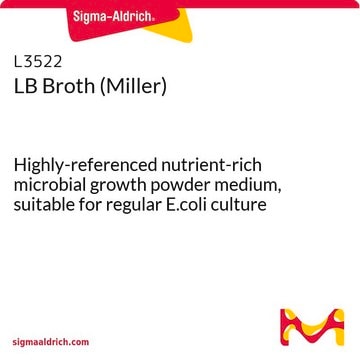C4478
S-Gal®/LB Agar Blend
reagent for selection of recombinant bacterial clones
Synonym(s):
Agar Blend
Select a Size
₹7,664.10
Estimated to ship on03 June 2026Details
Select a Size
About This Item
₹7,664.10
Estimated to ship on03 June 2026Details
Recommended Products
grade
Molecular Biology
for molecular biology
sterility
non-sterile
form
powder
technique(s)
microbiological culture: suitable
suitability
suitable for β-galactosidase test
nonselective for Escherichia coli
nonselective for coliforms
application(s)
food and beverages
microbiology
storage temp.
room temp
Related Categories
General description
Application
Features and Benefits
- More intense color contrast than X-gal
- Water-soluble and autoclavable for easiest use
- Convenient, pre-mixed media
Components
Tryptone, 10
Yeast extract, 5
Sodium chloride, 10
Agar, 12
S-Gal, 0.3
Ferric ammonium citrate, 0.5
IPTG, 0.03
Principle
Preparation Note
Other Notes
formulation. A medium prepared with S-Gal® is moderately dark due to the presence of ferric ammonium citrate. This darker background often provides enhanced contrast for automated colony counting or isolation.
Legal Information
related product
Storage Class Code
11 - Combustible Solids
WGK
WGK 3
Flash Point(F)
Not applicable
Flash Point(C)
Not applicable
Personal Protective Equipment
Choose from one of the most recent versions:
Already Own This Product?
Find documentation for the products that you have recently purchased in the Document Library.
Customers Also Viewed
Active Filters
Our team of scientists has experience in all areas of research including Life Science, Material Science, Chemical Synthesis, Chromatography, Analytical and many others.
Contact Technical Service








